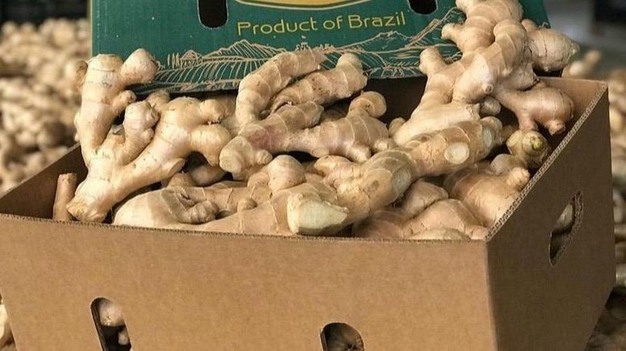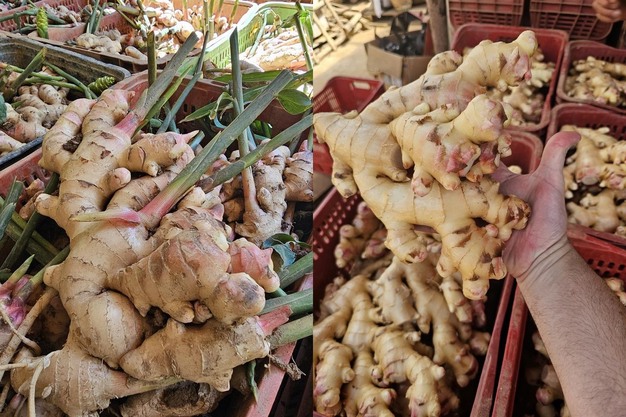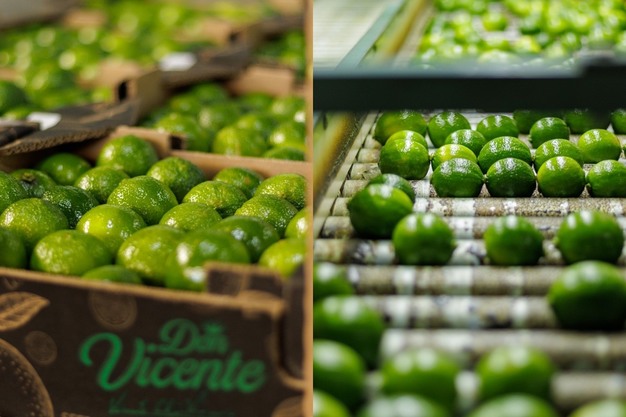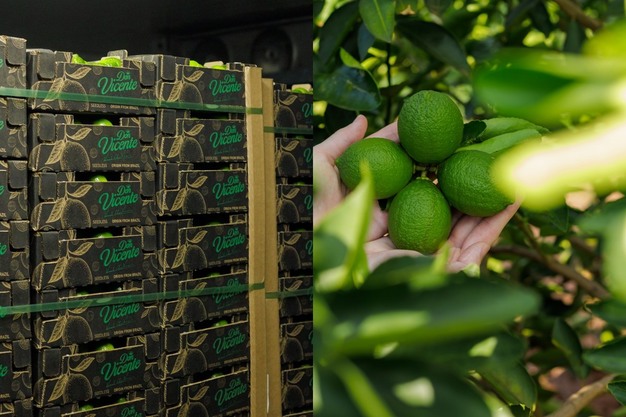Brazilian ginger and Tahiti lime exports have been marked by changes in weather conditions, unstable demand, and adjustments in international market dynamics. While Europe remains the main destination, factors such as drought, excess rainfall, and seasonality of consumption have had a direct impact on product quality, prices, and harvesting decisions by producers.
 © Don Vicente
© Don Vicente
Wellington Carvalho, representative of the Brazilian company Don Vicente, says that ginger is a relatively new crop for them. They started in 2024 with a small campaign aimed at becoming more familiar with market behavior. The variety they market is a fully developed root, shipped by sea, which differs from the so-called baby ginger, a younger and more sensitive ginger, mainly intended for air transport due to its fragility and lower degree of ripeness.
In the last season, many Brazilian producers withdrew from the market early due to prices not being high enough. The harvest ended in September, when it usually lasts until November. "Many producers decided to stop, given the lack of clear signals from the market, and to rethink their next season," says Carvalho. A few weeks later, there was an upturn in demand, but by then, supply had already decreased.
 © Don Vicente
© Don Vicente
Europe remains the main destination, with regular shipments to countries such as the Netherlands, Germany, France, Italy, Spain, and Sweden. There are also some business contacts in Canada and South Africa; however, the current production volume limits the possibility of expansion into new markets, although there are plans to increase productivity in the coming years.
The impact of climate change has been noticeable. A prolonged drought in the second half of 2024, followed by heavy rains, took a toll on the quality of the limes, especially their peel, and led to delays in the harvest. "Excess moisture can cause rotting and damage the external appearance of the product, which has a direct impact on its commercial value," he says.
 © Don Vicente
© Don Vicente
In the case of Tahiti limes, there is Brazilian production all year round thanks to the climatic diversity between regions such as São Paulo and Bahia; however, the market has shown signs of weakness since the end of last year. Prices fell due to the supply being greater in a period of lower consumption in Europe, coinciding with the winter. The fruit's quality, especially the size and consistency of the peel, has also been affected by the rains.
Currently, we are seeing a gradual improvement in the size of the limes, and a recovery in demand is expected as temperatures rise in Europe, a factor that historically helps boost citrus consumption, especially in beverages.
 © Don Vicente
© Don Vicente
 © Don Vicente For more information:Wellington Carvalho
© Don Vicente For more information:Wellington Carvalho
Don Vicente
Tel.: +55 17 99732 1110
comercial@frutasdonvicente.com.br
www.frutasdonvicente.com.br
